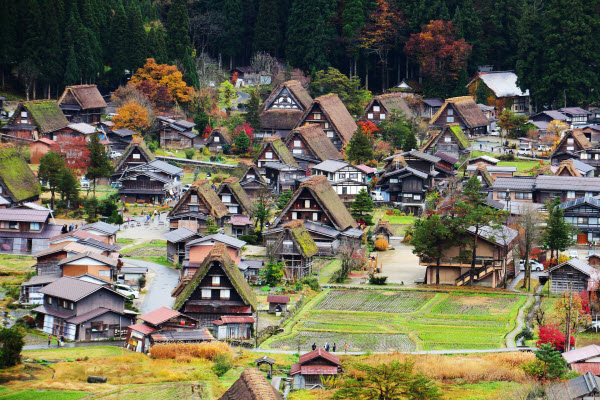![]() Verb います
Verb います
You have been using the verb part います with verbs for a variety of different reasons in the past, sometimes as the whole verb (for existance) and sometimes in combination with other verbs (for present progressive or ongoing forms). Use the table below to review different ways this verb is used.
います to exist, there is (are) |
| exist There is (are) | います | existed There was (were) | いました |
| いません |
didn’t exist There wasn’t (weren’t) |
いませんでした |
います is the verb we are going to use in situations talking about...
Existence of animate oject (people, animal, insect, etc.) |
 |
がっこうに います。 (学校にいます。) |
How we are (physically and emotionally) |
 |
おこっています。 (起こっています。) |
States of being |
 |
しっています。 (知っています。) |
Present progressives |
 |
たべています。 (食べています。) |
![]() TPR Presentation
TPR Presentation
Click presentation or click Begin below to watch and listen to a presentation to practice your TPR Vocabulary. You will be tested on this information in the Section 1 Part D Assignment folder.
Here is a print version of this actvity. You will still need to use the online version to hear any audio.
![]() Reading Practice
Reading Practice
Read the following paragraph and then answer the questions listed below. When you have finished answering the questions, click each question to see the correct answer.
わたしは たかはしゆみこです。きょう、げんきでは ありません。びょうきです。びょういんに いきました。いしゃは、わたしに くすりを くれました。それから、ちゅうしゃも しました。あまり、うれしくなかったです。のどが いたいです。そして、ねつが あります。くすりを のんで、やすまなければなりません。あした、うちにいて、いちにちじゅう、やすみますから、がっこうに いきません。がっこうに もどる(return)とき、たくさん しゅくだいが あります。しかし、わたしは あたまが いたいです。きぶんが わるいですから、あまり よむことが できません。きのう、がっこうに いきましたが、きぶんが わるかったので、はやく、うちに かえりました。
(the same story with kanji) 私は 高橋由美子です。今日、元気ではありません。病気です。病院に 行きました。医者は、薬を くれました。それから、注射もしました。あまり 嬉しくなかったです。喉が 痛いです。そして、熱が あります。薬を飲んで、休まなければなりません。明日、家にいて、一日中、休みますから、学校に行きません。学校に 戻るとき、たくさん 宿題が あります。しかし、私は、頭が痛いです。気分が悪いですから、あまり 読むことが 出来ません。昨日、学校に行きましたが、気分が悪かったので、早く 家に 帰りました。
| ゆみこさんは、きょう どうでしたか。(ゆみこさんは、今日 どうでしたか。) | びょうきでした。(病気でした。) |
| きょう、どこにいきましたか。(今日、どこに 行きましたか。) | びょういんに いきました。(病院に 行きました。) |
| がっこうに いきましたか。(学校に 行きましたか。) | いいえ、がっこうにいきませんでした。 (いいえ、学校に 行きませんでした。) |
| どうして、いきませんでしたか。(どうして、行きませんでしたか。) | びょうきでしたから がっこうに いきませんでした。(病気でしたから 学校に 行きませんでした。) |
| いしゃは なにをしましたか。(医者は、何をしましたか。) | くすりを くれました。ちゅうしゃをしました。(薬を くれました。注射をしました。) |
| なにを したらいいですか。(何をしたらいいですか。 ) | くすりを のんで やすまなければ なりません。(薬を 飲んで 休まなければなりません。 |
| あした、がっこうに いきますか。(明日、学校に 行きますか。) | いいえ、あした がっこうに いきません。(いいえ、明日、学校に 行きません。) |
| きのう、がっこうにいきましたか。(昨日、学校に 行きましたか。) | はい、きのう がっこうに いきましたが、はやく、うちに かえりました。(はい、学校に 行きましたが、早く、家に帰りました。) |
![]() The Historic Villages of Shirakawa-go and Gokayama
The Historic Villages of Shirakawa-go and Gokayama

These remote mountain villages of gassho-style houses in Shirakawa-go and Gokayama in Hida were registered as UNESCO World Heritage sites in 1993. “Gassho” style is defined as having a roof in the shape of a 60 degree triangle.
This area of Japan has heavy snow in the winter and this type of roof prevents snow from piling up on top of the roof. In these multilayer structures, the houses have 3rd and 4th floors and the attics are often used to raise silkworms. This way, warm air will move upward and keep the silkworms alive even in the cold winter. This reflects the wisdom of old farmers. With high mountains in the background, Gassho houses stand tall and beautiful throughout all four seasons.
Images Source: Jin Ze Shirakawa Xiang, Pixabay, CC0
![]() Graded Assignments
Graded Assignments
Please return to the Section 1 Tasks & Assignments folder to complete the graded assignments for Section1, Part D.

